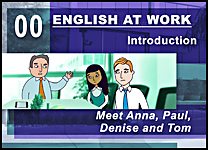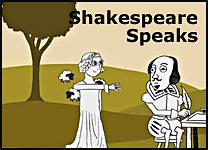Unit 5: English You Need
Exams, news, pronunciation, teachers' tips, learners' questions
Select a unit
- 1 English You Need
- 2 English You Need
- 3 English You Need
- 4 English You Need
- 5 English You Need
- 6 English You Need
- 7 English You Need
- 8 English You Need
- 9 English You Need
- 10 English You Need
- 11 English You Need
- 12 English You Need
- 13 English You Need
- 14 English You Need
- 15 English You Need
- 16 English You Need
- 17 English You Need
- 18 English You Need
- 19 English You Need
- 20 English You Need
- 21 English You Need
- 22 English You Need
- 23 English You Need
- 24 English You Need
- 25 English You Need
- 26 English You Need
- 27 English You Need
- 28 English You Need
- 29 English You Need
- 30 English You Need
Session 4
Welcome to The Teachers' Room. The show all about teaching practice. Grab a cup of coffee, pull up an armchair and relax. Learn something new, remember something fundamental or just have a giggle.
Activity 1
The Teachers' Room
Top tips for using a vocabulary box
What can you do with a vocabulary box? Sian and Dan have a few ideas.
Watch the video and complete the activity

___________________________________________________________________
Did you like that? Why not try these?
___________________________________________________________________
Using a vocabulary box
A useful tool
A vocabulary box is a great teaching and learning resource. Not only does it allow you to keep an 'interactive' record of vocabulary, but it also allows your students to have a level of control over what they learn and teaches them learner responsibility.
The scribe
One student per lesson can be nominated as the 'scribe' – they are responsible for recording the vocabulary on cards and putting it in the box. It is a good idea that the teacher gives the cues as to when to do so, so that unnecessary or irrelevant words are not recorded.
Relevant features
When recording vocabulary, don't forget to also include any relevant features for that word or phrase. Things like word stress, word class, collocations, synonyms, antonyms and other information can be written and included on the card. If these features are regularly included, it has the added benefit of demonstrating by example the best way to note down vocabulary to your students. They will have practice of this when they are scribing and can copy the same method when they record their own vocabulary in their notebooks.
Review
Remember to review the cards and words in the box regulary, as it can get quite full and very cluttered quickly. One nice way of doing this is to review with the class the words and phrases inside the box and sort them into categories of usefulness. E.g. These words are important and very useful. These words are somewhat useful. These words are less common or not relevant to us.
Open Access
A vocabulary box should be an open access resource for learners to use at any time when they are not busy. This makes it useful for:
Students who have arrived early to class
Students who have arrived late and cannot join with the current activity
Break time study
Early finishers (students who tend to complete their activities and tasks quickly)
Group activities and games
Mingle Swap
Give each student a card from the box and instruct them to describe what is on their card, without showing it, to another student, who has to guess what the item of vocabulary is. When they have both guessed correctly, they swap cards and go to find another player. In this way the vocabulary is circulated around the class, ready for group feedback to the teacher.
Chain Story
Give each student a card from the box and challenge them to make a story as a class. The teacher goes first by using their piece of vocabulary in a sentence. The next student must continue the story, incorporating the vocabulary on their card too. Then the second student takes their turn, and so on. This could also be done in smaller groups or as a written task.
Hot Seat
Sometimes called 'back to the board'. One student is nominated to sit in the 'hot seat' so that they cannot see the target language (on the board or on the vocabulary card). This vocabulary is then described to them and they have to guess what it is. This can be made into a competition by splitting the class into two teams and having them both guessing the same word.
Positive + Negative
This one is better for more capable learners. It is great for exploring and teaching context and connotation. One student (or group) takes a card from the vocabulary box and must explain to the class why that item of vocabulary is a good or bad thing. The next student (or group) must then take the opposite opinion. The teacher can monitor, suggest, correct and decide which explanation they like more.
Worksheets
Using vocabulary box words, a teacher can easily create a vocabulary task for a worksheet e.g. a crossword, spelling test or word search. In addition, students can be put into groups and handed a number of cards (e.g. 5) and told to write that number of questions for the opposite group in order to test them on the cards' meaning, form, word class, use etc.. E.g. 5 questions – multiple choice.
Small games
Pictionary
Charades
Hangman
20 questions
To do
Try our quiz to see if you've picked up our tips.
The Teachers' Room Quiz
5 Questions
Check what you've learned by selecting the correct answer to each question.
Help
Activity
Check what you've learned by selecting the correct answer to each question.
Hint
Apart from learning just the word, what else would be useful for students to be able to seeQuestion 1 of 5
Help
Activity
Check what you've learned by selecting the correct answer to each question.
Hint
If writing the cards provides a model for the students, what benefit would it be?Question 2 of 5
Help
Activity
Check what you've learned by selecting the correct answer to each question.
Hint
This point is not explained in the video so check the text above for a better understandingQuestion 3 of 5
Help
Activity
Check what you've learned by selecting the correct answer to each question.
Hint
If you keep putting things in and never take anything out…Question 4 of 5
Help
Activity
Check what you've learned by selecting the correct answer to each question.
Hint
One student describes the vocabulary in a positive way, the next describes the same word in a negative way.Question 5 of 5
Excellent! Great job! Bad luck! You scored:
Get involved
Well, those were just a few ideas that we here at BBC Learning English had, but we know that you teachers out there have lots of fantastic ideas too, and we'd like you to share them with us and everybody else.
If you have a great tip or technique for using a vocabulary box, or anything else, please email us at learningenglish@bbc.co.uk. Your email could be posted here on this page, or may even be mentioned in our show.
We are also looking for video tips to include in the programme. In order to do this, please include whether or not you'd like to be included for video with your tip.
Ekaterina, Russia
Your programme encourages me to think about the techniques I use and improve my teaching, so thanks a lot! I really liked your tips for learing vocabulary. You've mentioned that it's helpful to aks students to use a new word in their own context. I immediately remembered those vocabulary stories I had to write a lot as a student. It was difficult but very effective, so now I use it a lot in class. Students are asked to write their own short stories using as many new words as they can. This techniques allows not only to revise new words and their usage in the context, but also teaches students to be imaginative and creative.
Thank you Ekaterina. Getting students to cement their vocabulary learning by creatively writing stories is a wonderful idea - and a good source of engagement, fun and conversation between learners. Why not take it a step further by getting them to switch stories with another group once they have finished and use it as a role play. They can practice the vocabulary and their intonation too!
End of Session 4
Next up is Learners' Questions, our brand new series, where we choose one question sent in by an English language learner, and provide an answer. What will this week's question be? Join us in Session 5 to find out.
Session Vocabulary
Using a Vocabulary Box
- Useful open access resource
- Nominate a scribe
- Remember relevant features
- Review regularly
- Use for activities


